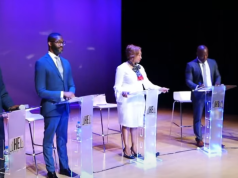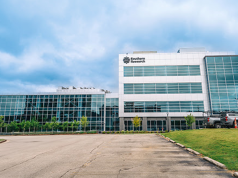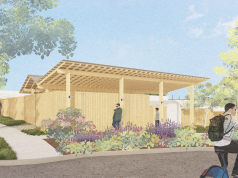By Erica Wright and Ameera Steward
The Birmingham Times
(Second of two parts)
One year ago this month, the world changed. March 2021 marks an anniversary that changed—and cost—lives around the globe. The COVID-19 pandemic turned our way of life upside down and will leave an indelible mark on history.
Over the past 12 months, hospitals ran out of beds, schools closed, businesses shut, grocery stores ran out of cleaning supplies, like Lysol and Clorox, and products like toilet paper and paper towels. Mandates like “remain six feet apart to practice social distancing” and “wear a face mask or covering” have become a part of the lexicon. Municipalities and the businesses in them have been transformed, and the Birmingham metro area is no different.
The Birmingham Times spoke with officials from more than a dozen area organizations and entities to discuss the changes they’ve implemented in the year since the onset of the COVID-19 pandemic. (Part I was printed in the March 11 edition of the Birmingham Times and can be found here.
Jefferson County Department of Health (JCDH)
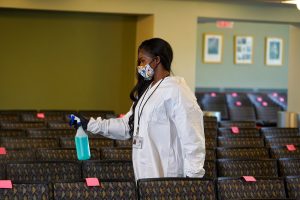
Last March, the Jefferson County Department of Health (JCDH) urged businesses to close and encouraged residents to practice social distancing and wash hands, while keeping everyone up to date on developments from the Centers for Disease Control and Prevention (CDC) and the Alabama Department of Public Health (ADPH).
“We had to [also] significantly reorganize our operations to meet our operational objectives,” said JDCH Deputy Health Officer David Hicks, D.O. “Many staff had to be assigned to pandemic response duties, and some of our services had to be scaled back.”
For example, the JCDH shut down its dental clinics, limited in-person primary care clinic appointments, and utilized telemedicine visits and consolidated services for its Guy M. Tate (GMT) Building, which is the JDCH headquarters. Some employees worked in person, while others worked remotely to balance workplace safety with the maintenance of public services. Some changes could become permanent, Hicks explained.
“We will have to establish a new normal. We have found that we can maintain certain services through innovations learned during the pandemic,” he said. “I anticipate that we will get back to pre-pandemic operations in the second half of [2021]. I certainly did not think we would still be in this pandemic a year later. … I do see a light at the end of the tunnel, though.”
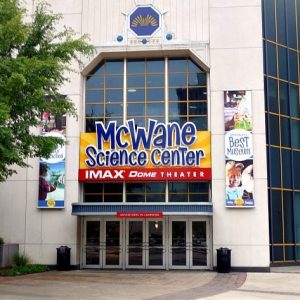
McWane Science Center
After being closed from March to July 2020, the McWane Science Center has made several changes.
“We are open fewer days now, from Wednesday through Sunday, … [partially] due to COVID-19 and because we did have to downsize our staff, [but] also because we felt like that [schedule] would give us two days to deep clean the building,” said McWane Center President and CEO Amy Templeton. “We clean every day, … but this allows us to really deep clean and make sure [the facility] is clean and safe for the next week of visitors.”
As a popular indoor gathering place for the public, the McWane Center has always had a remarkably high standard of cleaning and sanitation because of the flu, stomach viruses, and other illnesses that children pass around, “but we have increased those even more deeply,” said Templeton.
Exhibits that could not be adequately sanitized were closed like the Pin Wall, which has a bunch of pins that visitors can stick their hands or faces into and have the pins come out in a shape on the other side.
“We couldn’t keep it sanitized during the COVID-19 pandemic, so that’s one that has been taken off the floor,” said Templeton. “As we find more ways to sanitize things, we are adding things back. If any exhibits cannot be sanitized adequately, we try to remove them from the floor.”
For the three months the facility was closed, a lot of the staff worked remotely, said the CEO. After reopening, all the staff has been working in person, including front-line staff—cashiers, cafeteria workers, ride operators—and administrative personnel.
One thing the McWane Center has done differently that may stay around is, “We have a much stronger social media presence and virtual presence than we ever did,” Templeton said, adding, “We’ve had some great virtual programs.”
“We’ll always be a hands-on science center, but I think we will continue to offer high-quality virtual programming even after the pandemic.”
Miles College
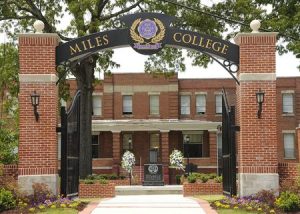
maintenance, and information technology (IT). (PROVIDED PHOTO)
Two weeks after being named to her permanent position, Miles College President Bobbie Knight had to not only close the doors to her institution but also keep her distance from students she once looked forward to greeting with a hug.
“[Historically Black Colleges and Universities (HBCUs)] are nurturing, and we know our students. … A lot of them come from backgrounds where they need that interaction with the professor or the advisor or the president who, for them, is like a [parent] figure,” said Knight. “It’s hard.”
When Miles College shut down, all operations went virtual except security, building maintenance, and information technology (IT). In June 2020, the school gradually returned faculty and staff to campus. Most faculty meetings were conducted via the Zoom online videoconferencing platform, specifically those with a large number of people. “We use a lot of Zoom,” said Knight.
Though the past year has been one of many changes, there have been some silver linings for the college.
Once doors to the institution closed, administrators opened a door to a health-and-wellness center in October 2020—and it is a permanent addition to the campus. The institution also retrofitted the classrooms and offices on campus with face-shield barriers, posted signs to enforce social distancing, and invested in additional cleaning supplies and personal protective equipment (PPE) for staff. Also, cleaning intervals across campus have increased and facial recognition scanners have been installed in places like the cafeteria to take temperatures.
And there’s even more good news: Andrew Sewell, Miles College Director of Environmental Services and COVID-19 Coordinator, and Medical Director Bob Agee, MD, have worked out an agreement with Cahaba Medical Group to vaccinate faculty and staff members and their family members over the age of 65 who want the doses.

Negro Southern League Museum (NSLM) and the Boutwell Auditorium
Alicia Johnson Williams didn’t have just one facility to look after when adjusting to the COVID-19 pandemic. Johnson has served as director of the Negro Southern League Museum (NSLM) since 2018 and the Boutwell Auditorium since late 2019.
“We have installed hand sanitizing stations in both of our facilities,” she said. “Early on, we implemented temperature checks for people as they entered the building. Before the pandemic, you were able to freely come to both buildings, but now we ask that you make a reservation ahead of time to prepare for your arrival and for us to have people in place to sanitize our sites.”
Williams added, “We have closed our research center at the museum temporarily because of the high touch points with all of the computers.”
The popular Satchel Paige exhibit, an attraction highlighting the storied career of one of baseball’s greatest pitchers, has remained open. Even though it’s one of those high-touch-point areas, precautions have been taken to keep visitors safe.
“It demonstrates the way he pitches, which was his claim to fame, so we just simply have security sanitize after every patron utilizes that area or exhibit,” Williams said.
Likewise, several safety measures have been put in place at the Boutwell Auditorium, including the installation of sanitation stations, the acquisition of a fogger machine to apply disinfectants designed to control the spread of COVID-19, and the requirement that tables and chairs be placed six feet apart.
“At an eight-seat table, for instance, we now place only four chairs. Also, chairs and tables are stretched out across the auditorium and exhibition hall floors,” said Williams. “In addition, we have posted lots of signage throughout the building reminding people to wash their hands and wear face masks.”
During the pandemic, both the NSLM and the Boutwell Auditorium hosted virtual events—and they may be here to stay, Williams said.
“One of the things that happened with our virtual events is that we had guests join from all over the United States, which would not have happened had the events been on site,” she said. “Virtual platforms can impact more people because the reach is broader.”
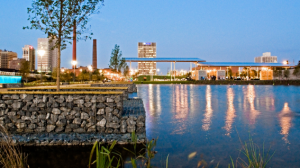
Railroad Park
Birmingham’s Railroad Park was in a different position than many area entities when the COVID-19 pandemic settled in. For one, it’s an outdoor space. Also, it provided residents a safe haven for exercise, relaxation, and a sense of community.
“The Railroad Park Foundation is committed to serving as a welcoming greenspace that provides people with hope and a much-needed sense of community,” said the foundation’s Executive Director Camille Spratling, adding that those things were needed more than ever in the past year.
“People of all ages and backgrounds have turned to the outdoors for activity and respite,” she said. “We have seen an increase in daily visitors, with more than 560,000 people in 2020. We have a lot of programming that helps foster a sense of community and promotes active, healthy lifestyles. … We have moved that programming online and to our social media profiles, as well, so people can still participate there.”
All Railroad Park programs or events from March 2020 forward were canceled or moved online.
“Our goal is to provide access, so I could see continuing to provide some of our programming virtually,” Spratling said. “We were quick to adapt and continue to provide outreach through key programs.”
For example, healthy-cooking classes and exercise classes were transitioned to videos designed for home use, and financial forum classes went from free in person to free virtual online.
Regions Bank
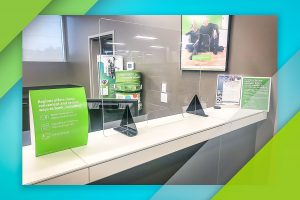
of customers and associates. (PROVIDED PHOTO)
From the onset of the pandemic to the present, Regions Bank never closed, said Birmingham Market Executive Alan Register.
“We have kept branches open, … quickly retrofitting them with a wide range of safety precautions to protect the health of customers and associates,” he said. “When the pandemic was in its early stages, we shifted temporarily to a mostly drive-through service model, along with in-branch visits by appointment only.”
Some innovations put in place by the financial institution are likely to stay around.
“Easier videoconferencing and consistent enhancements to digital services will continue to accelerate,” Register said. “But at its core, banking remains a people business. There will still be a physical presence with local bankers in local branches providing customized financial advice, guidance, and education to individuals and businesses.”
Regions played another significant role during the pandemic.
“Across 15 states, Regions Bank and the nonprofit Regions Foundation have allocated more than $5 million in support of small-business relief, community outreaches, and other programs helping people and businesses impacted by the pandemic,” Register said.
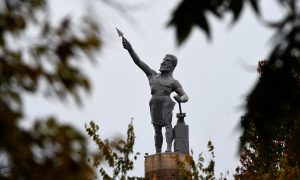
Vulcan Park and Museum
The statue of Vulcan, the Roman god of fire and forge, that overlooks the city of Birmingham is known for its resilience—and that came in handy when the Vulcan Park and Museum was hit with some hard decisions during the COVID-19 pandemic.
Two positions had to be eliminated, and others could not be filled due to the pandemic. Of all the steps taken over the past year, those were the most difficult, said Vulcan Park and Museum President and CEO Darlene Negrotto.
Despite the challenges, the team never lost sight of keeping visitors as satisfied and worry-free as possible.
“We recognized that families needed a place for fresh air and recreation during the lockdown,” said Negrotto, who added that access to the Vulcan Trail remained open and free of charge.
“Having a park allows us to do a lot of things safely that couldn’t necessarily be done indoors,” she said.
During the winter holidays, Vulcan hosted an outdoor celebration where families could play games and enjoy a light show set to holiday music.
For those who were unable to visit in person, the museum reworked existing educational programs not only because field trips were cancelled but also because parents were thrust into the role of teacher and in-school educators had to adjust to a virtual environment.
“We wanted to equip our teachers and our parents with tools to help guide students in that new environment,” Negrotto said. “So, we created some parent-friendly teaching activities that would supplement some [of our] online videos.”
Another big change: The annual banquet for the Vulcans Community Awards, which recognize individuals who have a positive impact in and around Birmingham, was conducted virtually.
“The attempt is to basically shift everything that can be shifted to virtual,” Negrotto said.
University of Alabama at Birmingham (UAB)
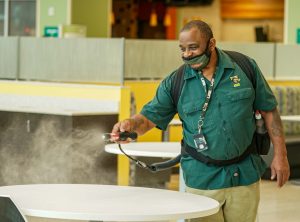
University of Alabama at Birmingham (UAB) has been dealing with the pandemic on both the academic and medical fronts. Its medical facilities have set up mobile COVID-19 testing and vaccination sites at A.H. Parker High School, the UAB Hospital-Highlands campus, and the Hoover Metropolitan Complex, in addition to creating an app to trace if someone who has tested for COVID-19 has been within six feet of another person for more than 15 minutes per day.
Last year, UAB implemented limited business hours, but is now back to a “full schedule, … and everybody is back to full speed,” said UAB President Ray L. Watts, MD.”
Like other institutions, UAB closed its campus due to the pandemic. It has since established a hybrid pattern that began with the fall semester, which allows students to attend class in person and keeps everybody socially distanced by six feet or more in classrooms.
“Students and faculty like being on campus,” said Watts. “The main thing is to keep all of our students and faculty and staff safe. That’s why we’ve created these hybrid patterns, which enable us to have half of a class in on one day and half on another day.”
When UAB closed in March 2020, every building was thoroughly cleaned. When the campus reopened in August, the focus was on sanitizing everything—door handles, elevator buttons, inside restrooms, tabletops, glass surfaces. In food courts, furniture was rearranged or removed to discourage people from gathering in crowded spaces, and food services were take-out only.
Over the past year, the university has moved to virtual for most employees, but clinical employees still come on campus to take care of patients.
“We’ve really provided everyone with the opportunity to work [as] remote as possible,” Watts said.
Telehealth options have expanded, as well, which has helped UAB reach patients and their families.
“Everybody has adapted [to the changes] well,” said Watts. “Nobody [has] complained, and everybody has been positive about doing everything they can to contribute to our mission. We’re a very mission-focused organization, and we serve more Alabamians probably more than any other institution in the state.”
Even with the pandemic ongoing, UAB’s place hasn’t slowed.
“… Our research dollars and research activities were bigger than the year before, so we broke another record in research funding. … And we’ve seen more patients … and saved more lives than ever,” Watts said.
In Part I, which was published on March 11, the A.G. Gaston Boys and Girls Club, Alabama Power, the Birmingham Civil Rights Institute, the Birmingham Public Library, the Birmingham Water Works, the Birmingham Museum of Art, the City of Birmingham, the Birmingham Zoo discussed the changes they implemented in the year since the onset of the COVID-19 pandemic.
To read more COVID-19 related stories, click one of the links below.



